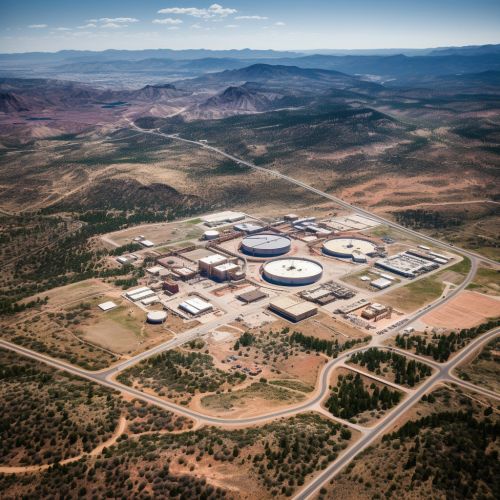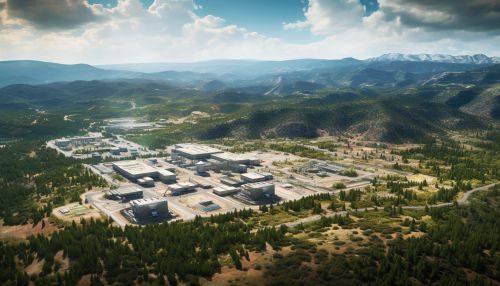Los Alamos National Laboratory
Overview
Los Alamos National Laboratory (LANL) is a United States Department of Energy national laboratory, initially organized during World War II for the design of nuclear weapons as part of the Manhattan Project. It is located in Los Alamos, New Mexico, and is one of the largest science and technology institutions in the world. It conducts multidisciplinary research in fields such as national security, space exploration, renewable energy, medicine, nanotechnology, and supercomputing.


History
The origins of LANL date back to the early 1940s when the U.S. government established Project Y of the Manhattan Project, an initiative aimed at developing the first atomic bomb. The laboratory was initially led by J. Robert Oppenheimer, a theoretical physicist known as the "father of the atomic bomb." The site was chosen for its seclusion and the existing infrastructure of the Los Alamos Ranch School.
Research and Development
LANL is renowned for its cutting-edge research and development in a variety of scientific and technological fields. The laboratory's research efforts are focused on solving national security challenges through scientific excellence.
Nuclear Research
One of the primary areas of research at LANL is nuclear science. The laboratory has been instrumental in the development of nuclear reactors and the production of plutonium-239, a key ingredient in nuclear weapons. LANL also conducts research in nuclear fusion, a potential source of limitless, clean energy.
Supercomputing
LANL is home to some of the world's most powerful supercomputers, which are used for a variety of scientific and engineering tasks. These include the modeling of complex biological systems, the simulation of nuclear reactions, and the analysis of large datasets in fields such as climate science and cosmology.
Material Science
Research in material science at LANL involves the study of the properties and applications of various materials, including metals, polymers, ceramics, and composites. This research supports a wide range of applications, from nuclear energy to nanotechnology.
Biological Research
LANL conducts research in several areas of biology, including genomics, bioinformatics, and biodefense. This research contributes to our understanding of diseases and the development of new treatments and vaccines.
Facilities
LANL's facilities include research laboratories, supercomputing centers, and nuclear reactors. The laboratory also operates several specialized facilities for materials research, biological research, and environmental science.
Impact and Contributions
Over the years, LANL has made significant contributions to a wide range of scientific fields. Its research has led to numerous technological advancements and scientific discoveries, and it has played a crucial role in the development of the U.S. nuclear arsenal. LANL's work has also contributed to the U.S. space program, including the development of the nuclear power systems used on many NASA missions.
Controversies and Criticisms
Despite its contributions, LANL has also been the subject of controversy and criticism. These have largely centered around issues of environmental impact, safety, and the ethical implications of nuclear weapons research.
